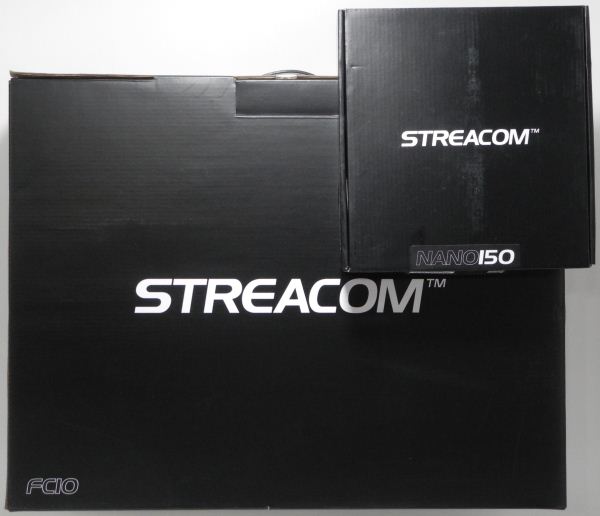Streacom's FC10 and Nano150: Building a Fanless Ivy Bridge HTPC
by Ganesh T S on December 22, 2012 3:30 AM EST- Posted in
- HTPC
- Fanless
- Ivy Bridge
Introduction
HTPC enthusiasts often place a lot of emphasis on silent systems for obvious reasons. We have looked at systems with passive thermal solutions before, but never presented the build process for one. Back in May, we had covered Streacom's announcement of the fanless FC9 and FC10 chassis. With support for passive cooling of CPUs with a TDP of up to 95 W and a sleek industrial design, HTPC enthusiasts have been eagerly waiting for these units to hit the market. After some delays, Streacom finalized the design and started shipping the units to resellers in mid-November. We requested for samples of the FC10 chassis and the Nano150 PSU and Streacom's shipment reached us in the first week of December.
Dustin usually handles case reviews and Martin handles PSUs, but, with the Streacom components, we are going to take a different long term approach. We will be using the FC10 and the Nano150 as building blocks for a fully passive HTPC. We also intend the HTPC to act as a testbed for evaluating discrete HTPC GPUs.
The Streacom offerings introduced in May also included the FC9 which supports mITX and uATX motherboards. However, the FC9 supports half-height PCIe cards only. The FC10, on the other hand, supports up to two full height PCIe cards. Hence, we took the decision to go in for the FC10 despite our plans to use a mITX motherboard.
In today's piece, we will first check out the Streacom components in detail. Following that, we will take a brief look at the other components of our passive HTPC build. After that, we will go through the build process in detail and also present some thermal performance results. In the concluding section, we will have a sneak peek at what lies in store in the remaining parts of the HTPC series.











63 Comments
View All Comments
wsaenotsock - Saturday, December 22, 2012 - link
As much as I appreciate the whole full-silent chassis by Streacom here, and others such as Zalman- who made a high end one a few years back... I don't understand why there aren't more cases that are designed like this while also incorporating low-volume air cooling with a large sized, high quality fan, slightly undervolted. Widely tested & recommended fans (such as on the SPCR website) are barely detectable and add enough airflow to keep the temperatures manageable, so that you can actually use performance components, not just end up cornered into low wattage HTPC stuff, and still not worry about reducing lifespan of parts with heat.I want to see more cases that are intelligently designed instead of just fully passive or the opposite extreme with 5 - 8 120mm fan cutouts.
snuuggles - Saturday, December 22, 2012 - link
Took the words out of my mouth. I wonder if it's that HT stuff simply "should" be under a certain heat envelope so they play nice with all the other components they are stacked up with traditionally?I mean, there's a reason most stereo stuff doesn't come with a fan of any kind.
PS did you see the new type of "bellows" fan being developd
Menty - Saturday, December 22, 2012 - link
Absolutely. Fully passive cases just make too many compromises when one or two very very slow fans will make everything just that much happier.LauRoman - Saturday, December 22, 2012 - link
Problem is, very slow fans get dust clogged and louder as time goes on. On a machine that will barely be touched by fingers, let alone opened-up that's not a very good thing.Olaf van der Spek - Saturday, December 22, 2012 - link
Isn't that why dust filters were invented?EnzoFX - Saturday, December 22, 2012 - link
Still requires maintenance.Hrel - Sunday, December 23, 2012 - link
you sound like a horrible person. You can't be bothered to clean your PC once/year? Slob.Samus - Monday, December 24, 2012 - link
yep. coolest thing about passive cooling is you can open it up 3 years later and it still looks brand new inside without a spec of dust!mike8675309 - Thursday, December 27, 2012 - link
Someone hasn't opened up his T.V., or stereo, or cable box lately.kmmatney - Tuesday, January 22, 2013 - link
I bought my Kenwood receiver (still used with my TV) in 1989, and cleaned it out for the first time about 2 years ago. So yeah, you have to clean it out, but only every 20 years or so. That said, I'd prefer a slow moving fan in an HTPC case.